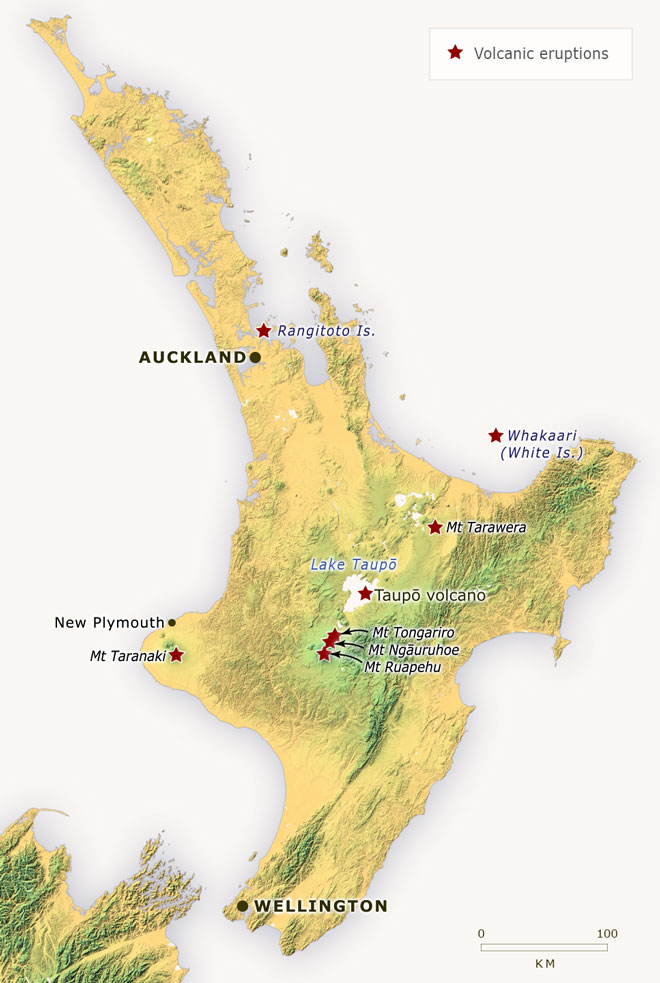Before going to New Zealand, I had to do some research on the country's geology. Perhaps there were important geologic features to see or rock samples to gather...
Prior to 200 million years ago, New Zealand was submerged off the coast of Gondwana (a super continent made up of Australia, Antartica, Africa, India and South America). Many of its rocks formed from layers of sediment deposited on the ocean floor by runoff from Gondwana.
100 million years ago, New Zealand had risen above sea level and formed the coast of Gondwana, right next to Australia.
85 million years ago, it split off from Gondwana. At the time of the split, its plants and animals would have matched those of its nearest neighbors (Australia and Antartica). As time passed, though, they would diverge substantially.
Interestingly, the territory of New Zealand is split between two plates: the Pacific plate and the Australian plate. The boundary between them runs across the south island. The North island is entirely on the Australian plate. In the south, the two plates are sliding past each other (kind of like the San Andreas fault), creating the Southern Alps. In the north, the Pacific plate is being subducted under the Australian plate, creating a line of volcanic activity.
| New Zealand plate boundaries (Image stolen from here on Wikipedia) |
When one plate subducts under another, the sinking plate carries water down under the upper plate. As the water gets squeezed out of the lower plate, it causes the rock above it to melt and become more buoyant. The resultant magma migrates towards the surface giving rise to chains of volcanoes. (There is a thorough Wikipedia description here.) Hence, there are a number of volcanoes and a lot of thermal activity on the North Island. In the last several thousand years there have been a number of major volcanic eruptions. The Taupo eruption 1800 years ago is probably the largest eruption in the world within the last 5000 years.
Here's a map of New Zealand's volcanoes (all on the North Island).
 |
| Map of NZ volcanos (from here) |
As future posts will hopefully show, a lot of the places we went to were strongly affected by this geology. Mountains, volcanoes and gold deposits all owe their existence to the collision of the Australian and Pacific plates.
No comments:
Post a Comment